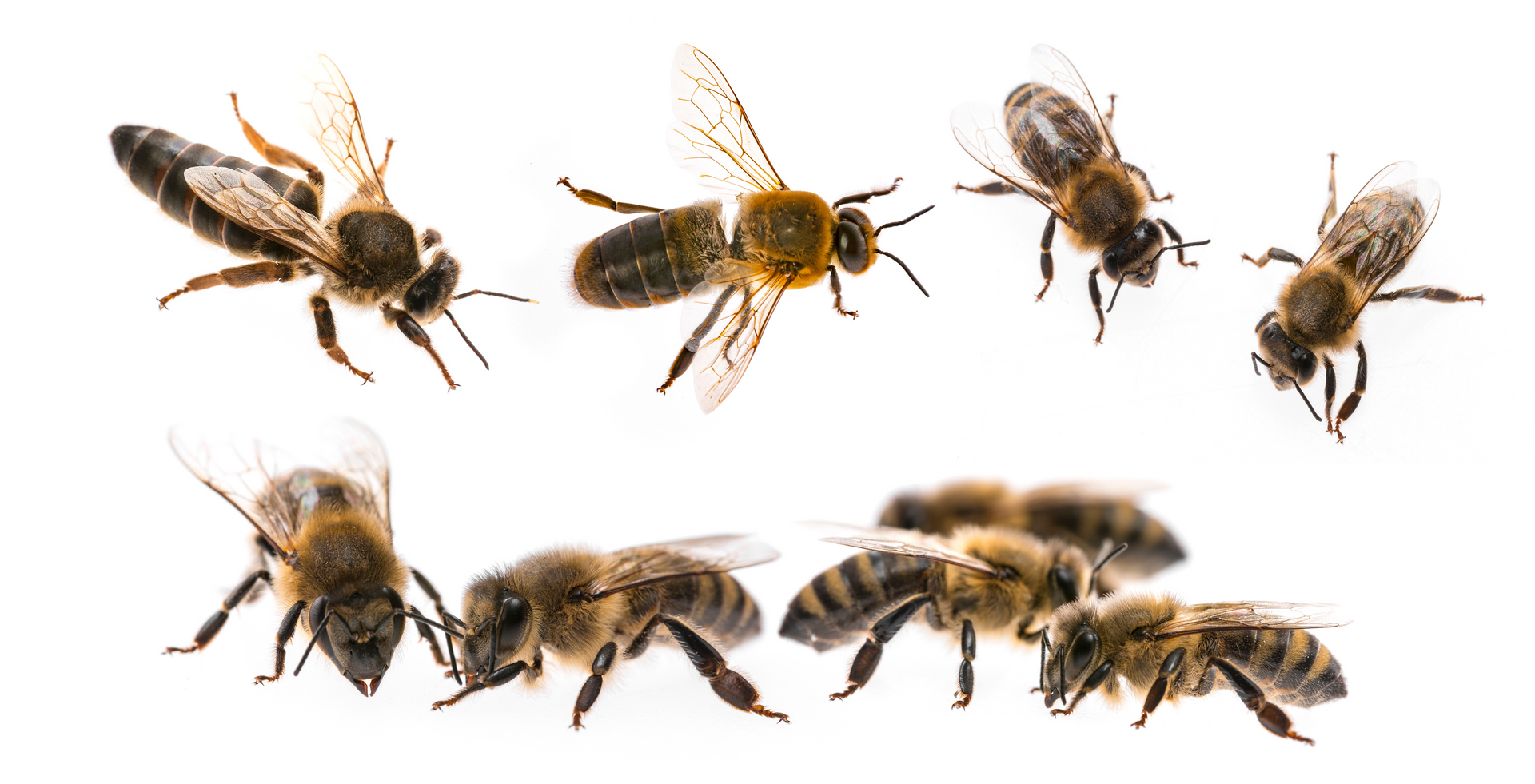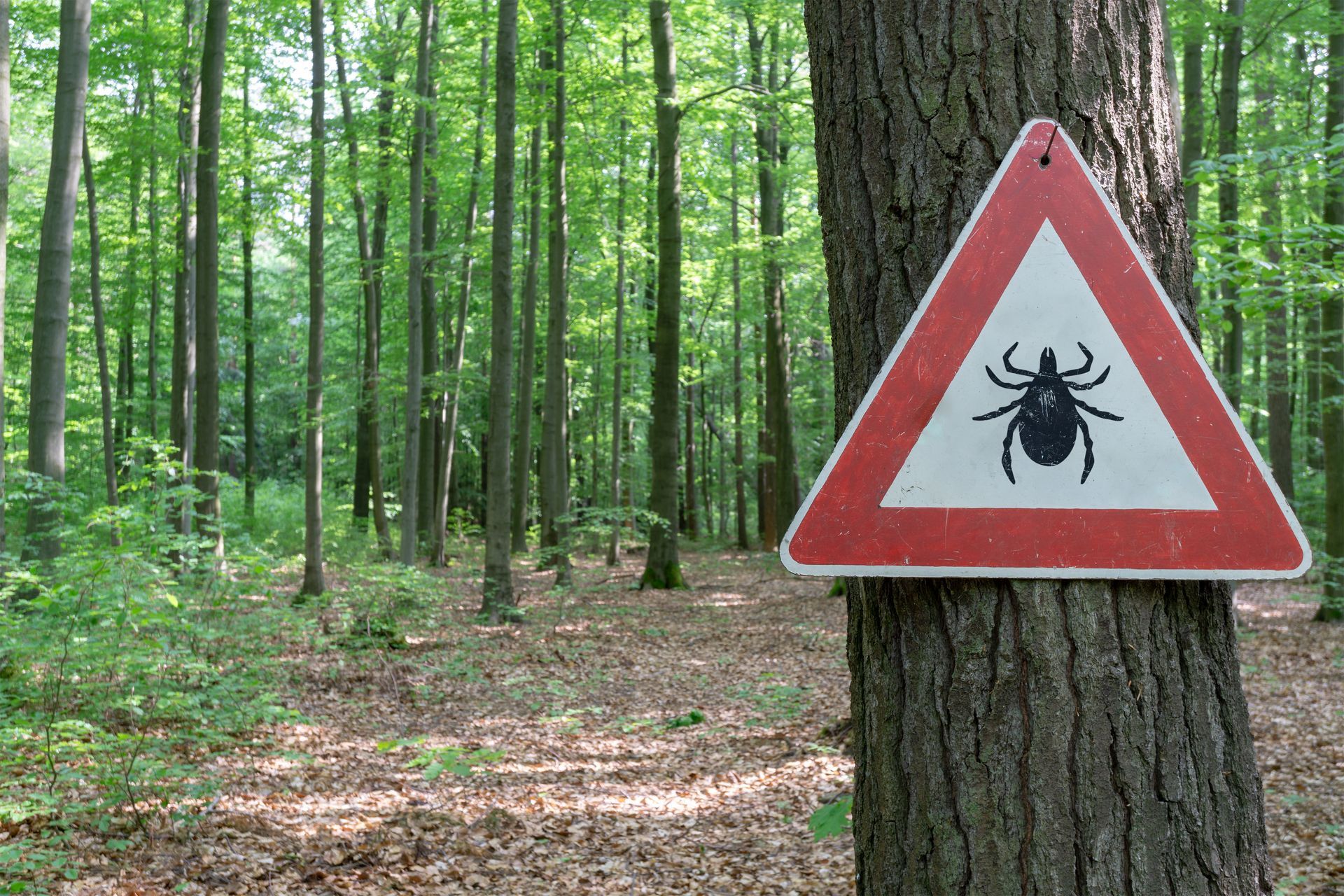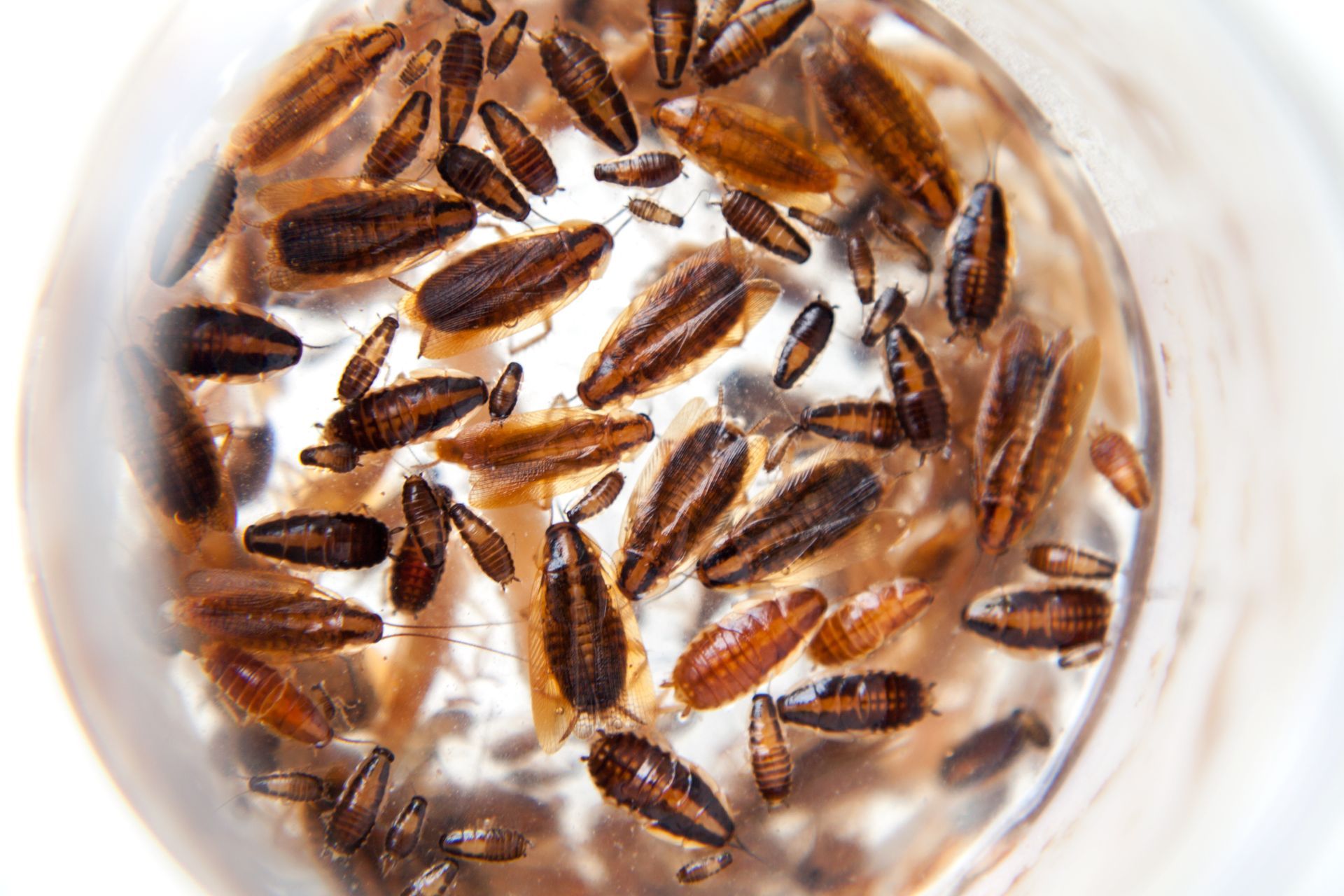Are Murder Hornets Dangerous?
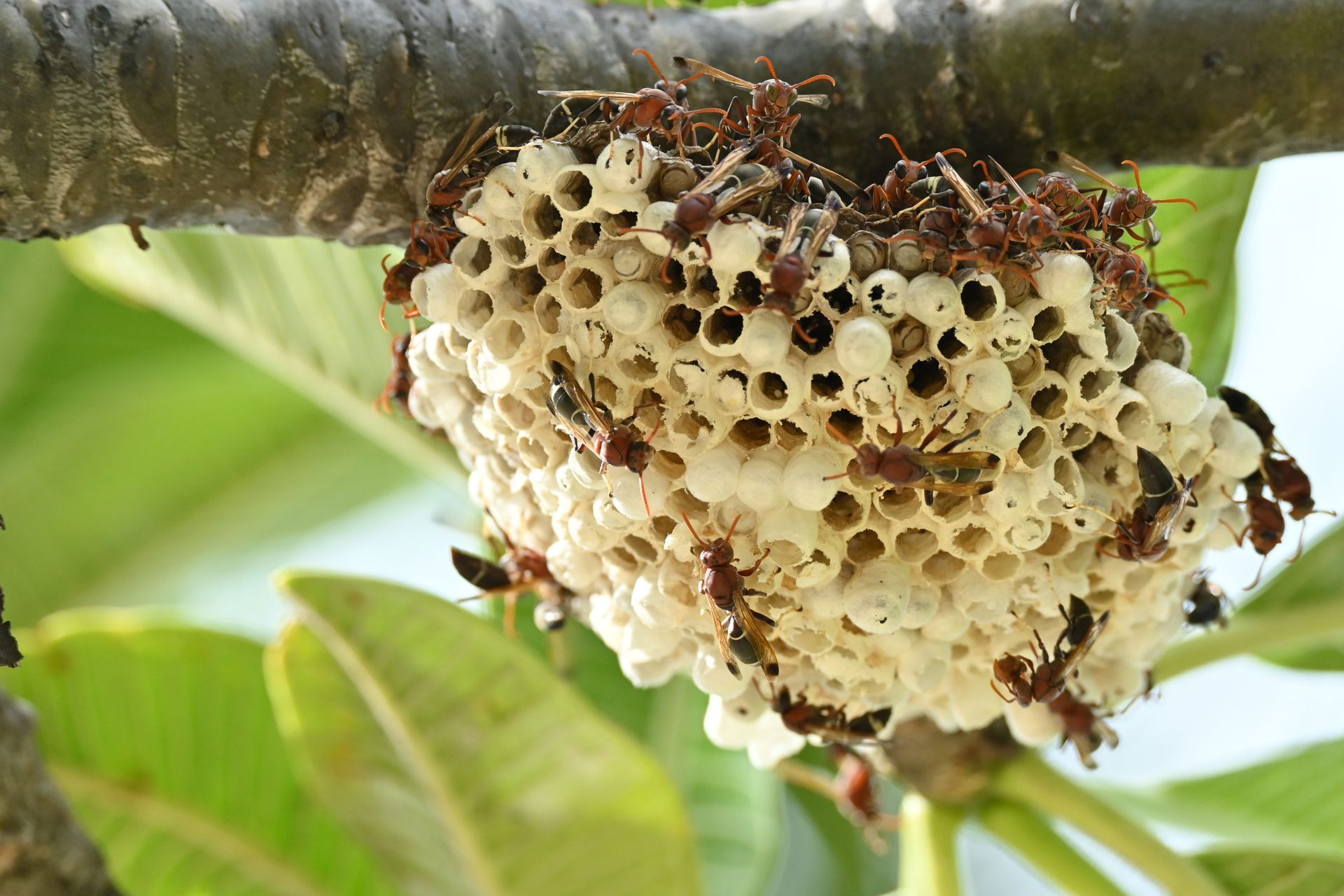
Asian giant hornets are commonly referred to as "murder hornets" because they pose a significant threat to both honeybee populations and, in rare cases, humans. Their queens can grow bigger than two inches long and their workers can grow larger than 1 ½ inches which make them some of the largest stinging insects on the planet. They have incredibly large mandibles and a massive stinger that makes these hornets formidable predators. They earned their name for their brutal attacks on honeybee hives, where they can destroy a beehive population in a few hours. During this “slaughter and occupation” phase, they decapitate the bees that inhabit a hive so they can take the headless bees’ bodies back to feed their young. For larger targets like humans, their sting is particularly dangerous. The stinger is long enough to penetrate traditional beekeeping suits and the venom is potent enough to cause significant damage to human flesh. The pain from a sting is described as similar to hot metal piercing the skin. They are so dangerous that murder hornet swarms are responsible for up to 50 human fatalities annually in Japan, where these hornets are native to.
The arrival of Asian giant hornets in the United States was first confirmed in Washington State in late 2019. These invasive hornets immediately posed a serious threat to local honeybee colonies that were crucial for the pollination of many crops. The potential impact of murder hornets on agricultural pollination and honeybee populations is a significant concern for U.S. beekeepers as well as populations near where murder hornets have been spotted. While these hornets typically do not attack humans or pets unless provoked, their presence in the U.S. has led to efforts to track and eradicate them to protect local ecosystems and bee populations from this invasive species.
What Do Asian Giant Hornets Look Like?

Asian giant hornets, scientifically known as Vespa mandarinia, are distinguished by their large, striking appearance. They grow to an impressive 1 ½ to 2 inches in length, with queens potentially growing even larger. This makes them the world's largest hornet species. The hornets have a distinctive, broad head that is a vibrant orange-yellow color that features extremely large mandibles and dark, teardrop-shaped. Their antennae are brown with a bright yellow-orange base which adds to their vivid appearance.
The thorax of the Asian giant hornet is a dark brown color which contrasts sharply against their abdomen which features alternating bands of orange or yellow and black or brown. This pattern is reminiscent of a tiger's stripes which contributes to the look of a deadly predator. Their wings that can span more than 3 inches, are broad and somewhat translucent like those of a small dragonfly. One of the hornet's most notorious features is its stinger. They have one of the most prominent stingers in the Vespa family, measuring about 1/4 inch long. This stinger is capable of injecting a large amount of potent venom and can penetrate most bee suits. This combination of size, coloration, and formidable stinger makes the Asian giant hornet a visually unique and easily identifiable species.
How Dangerous are Murder Hornets?
Murder hornets are notorious for their dangerous and potent venom. Researchers in Japan, where these hornets are more common, have likened the effect of their venom to that of a venomous snake. The sting delivers venom that contains a neurotoxin known as mandaratoxin. This neurotoxin contains mastoparan-M which is a cytolytic peptide that can cause significant tissue damage and is accompanied by a sensation described as similar to a hot nail being driven into the skin. These hornets are also capable of spraying venom into the eyes which can cause long-term vision impairment.
While individual hornets typically cannot inject a lethal dose on their own, the danger escalates when multiple hornets sting simultaneously. In Japan, up to 50 deaths annually are attributed to swarms of these hornets stinging individuals who are unable to escape in time. They usually do not exhibit aggressive behavior towards humans unless provoked but they become territorial when defending their nests or when invading beehives for food. The Asian giant hornet's stinger is long enough that it can pierce through regular beekeeping suits and deliver a dose of venom far larger than other wasps or bees. The pain from their sting is severe, and they are capable of stinging repeatedly. For individuals allergic to bee or wasp stings, encounters with these hornets should be approached with extreme caution. If stung, immediate medical attention is advised especially if symptoms like anaphylaxis are experienced.
What is the Biggest Threat Murder Hornets Pose?
The biggest threat posed by Asian giant hornets lies in their potential impact on honeybee populations because bees are crucial for pollinating a wide array of food crops. These hornets hunt down bee colonies and are especially dangerous to honeybees in late summer and early fall. They launch brutal attacks on beehives that kill adult bees so they can rob the colony of its larvae and pupae to take back to the hornets’ nests as food. This behavior not only decimates bee colonies but also disrupts the ecological balance and agricultural productivity dependent on bees for pollination.
If these hornets become established in North America, they pose a significant threat to already vulnerable European honeybee populations. These bees are crucial for U.S. agriculture and are defenseless against the murder hornets due to their smaller size and lack of natural defenses that native Asian honeybees possess. European honeybees in the U.S. are already struggling with issues like parasites, diseases, and pesticides so the introduction of a predator like the Asian giant hornet could have catastrophic effects in any areas they become prominent in. This potential threat extends beyond honeybees, as the cascading impacts of honeybee population loss can impact both plant and native insect populations. Without plants to feed on and provide shelter, other insect populations could experience declines which could in turn put other animal populations at risk as food chains are impacted.
Where are Murder Hornets From?
Asian giant hornets originate from a vast region across Asia. This species is native to various parts of temperate and tropical East Asia, South Asia, Mainland Southeast Asia, and some regions of the Russian Far East. These hornets are found in a wide range of countries including:
- Russia
- Korea
- China
- Taiwan
- Laos
- Thailand
- Cambodia
- Myanmar
- Vietnam
- Nepal
- India
- Sri Lanka
- Japan
Murder Hornet Habitats
Asian giant hornets have specific preferences for their habitats. They are primarily found in low mountainous regions and forests. They tend to avoid plains and areas at high altitudes. These hornets are known for their ability to create nests in various ways, including digging their own or utilizing pre-existing tunnels made by rodents. Another common nesting site for them is near the roots of rotten pine trees which provide them with a secure and hidden environment for their colonies.
The majority of nests are found to be subterranean, with a study revealing that out of 31 nests, 25 were located around rotten pine roots. These nests vary in depth, ranging from 6 to 60 cm deep. Interestingly, while aerial nesting is extremely rare in their native habitats found in Japan, all of the nests discovered in their invasive range in North America have been aerial. This preference for specific types of habitats and nesting sites illustrates the adaptability of Asian giant hornets and their ability to thrive in environments with low human disturbance.
Are Murder Hornets in the US?
Asian giant hornets were first confirmed in the United States in late 2019. The initial sightings occurred in the northwest corner of Washington State which marked the hornets' first known presence in the U.S. This sparked significant concern among scientists and entomologists which led to a concerted effort to track and eradicate the species so they wouldn’t become an invasive threat. These efforts intensified as more sightings and nest discoveries occurred in Washington State and British Columbia.
The presence of these hornets in North America has been a subject of close monitoring and research. Various nests were found and destroyed in Washington State and British Columbia in 2020 and 2021, including significant finds near Blaine, Washington. By the end of 2022, there were no confirmed sightings of Asian giant hornets in North America which suggests that eradication efforts might have been successful in that region. The fight against these hornets has been a collaborative and ongoing effort that involve public reporting, scientific research, and legislative action to prevent them from establishing a permanent presence and posing a significant ecological threat.
What Often Gets Mistaken for Murder Hornets
In the United States, due to the heightened awareness and concern surrounding these hornets, people frequently misidentify other large, striped insects as being the notorious species. However, the likelihood of encountering an actual murder hornet is quite low in most parts of the country.
Common insects that are often confused with Asian giant hornets include various species of wasps, hornets, and bees that share similar striping and coloring. These insects, while they may be large and have similar striping patterns, differ significantly in size, behavior, and habitat from the Asian giant hornet. To accurately identify these insects, it's important to consider the region, the insect's size, and its nesting habits. Misidentifications can lead to unnecessary alarm or inappropriate responses, so a clear understanding and accurate identification of local insect species are essential. The following are all flying stinging insect types that are commonly mistaken for Asian giant hornets.
Cicada Killer Wasp
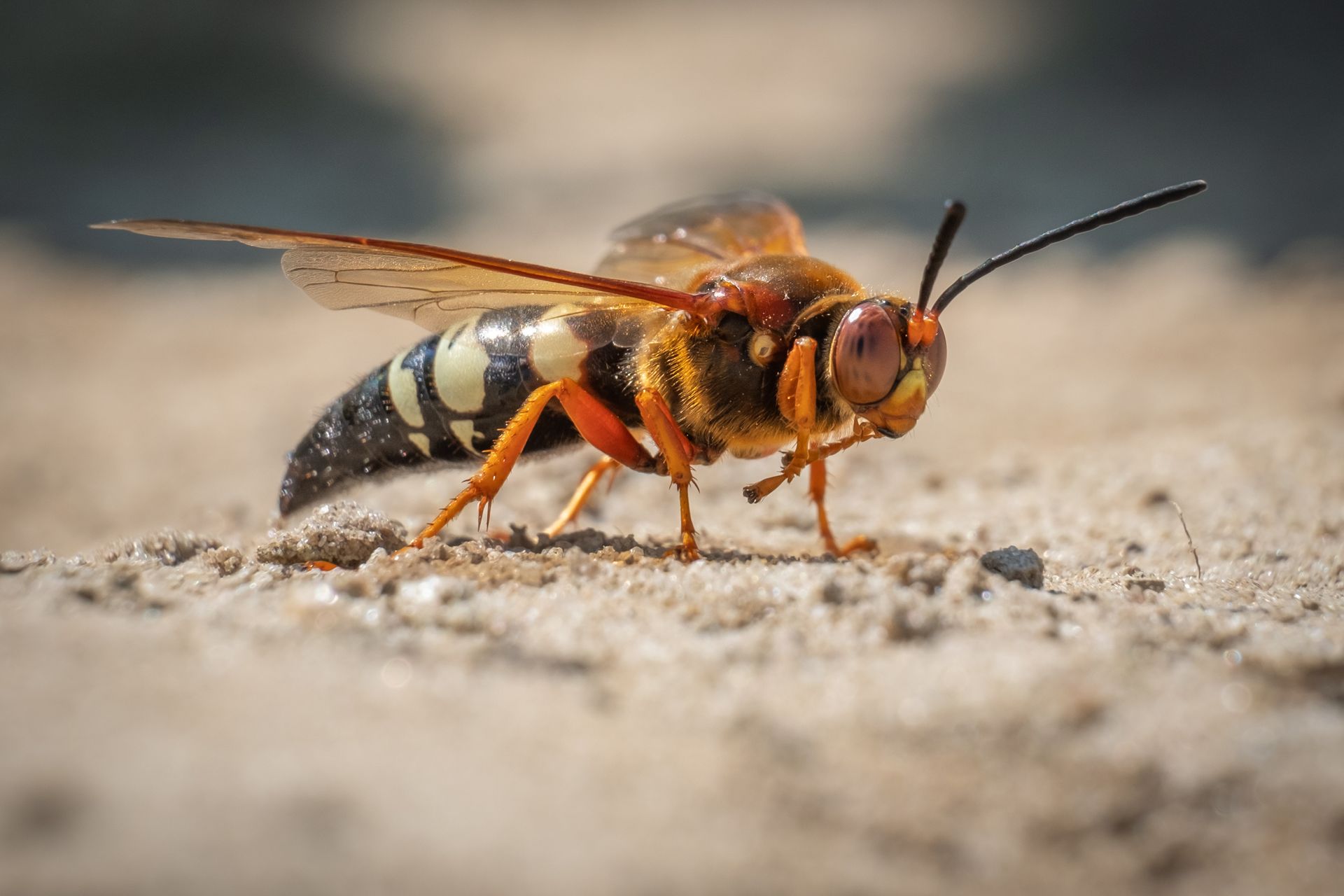
The Cicada Killer Wasp is a solitary digger wasp species that is a notable insect commonly found in the eastern and midwestern United States. They can also grow up to 2 inches in length which often causes confusion. Even though these wasps are known for their impressive size, they are solitary wasps that do not participate in a social hierarchy like Asian giant hornets do. Despite their appearance, Cicada Killer Wasps are not typically aggressive towards humans and rarely sting. They play a significant ecological role because they help maintain cicada populations. Their presence in gardens and green spaces is rarely a cause for concern as they generally go about their business of hunting and nesting without disturbing human activities.
Paper Wasp
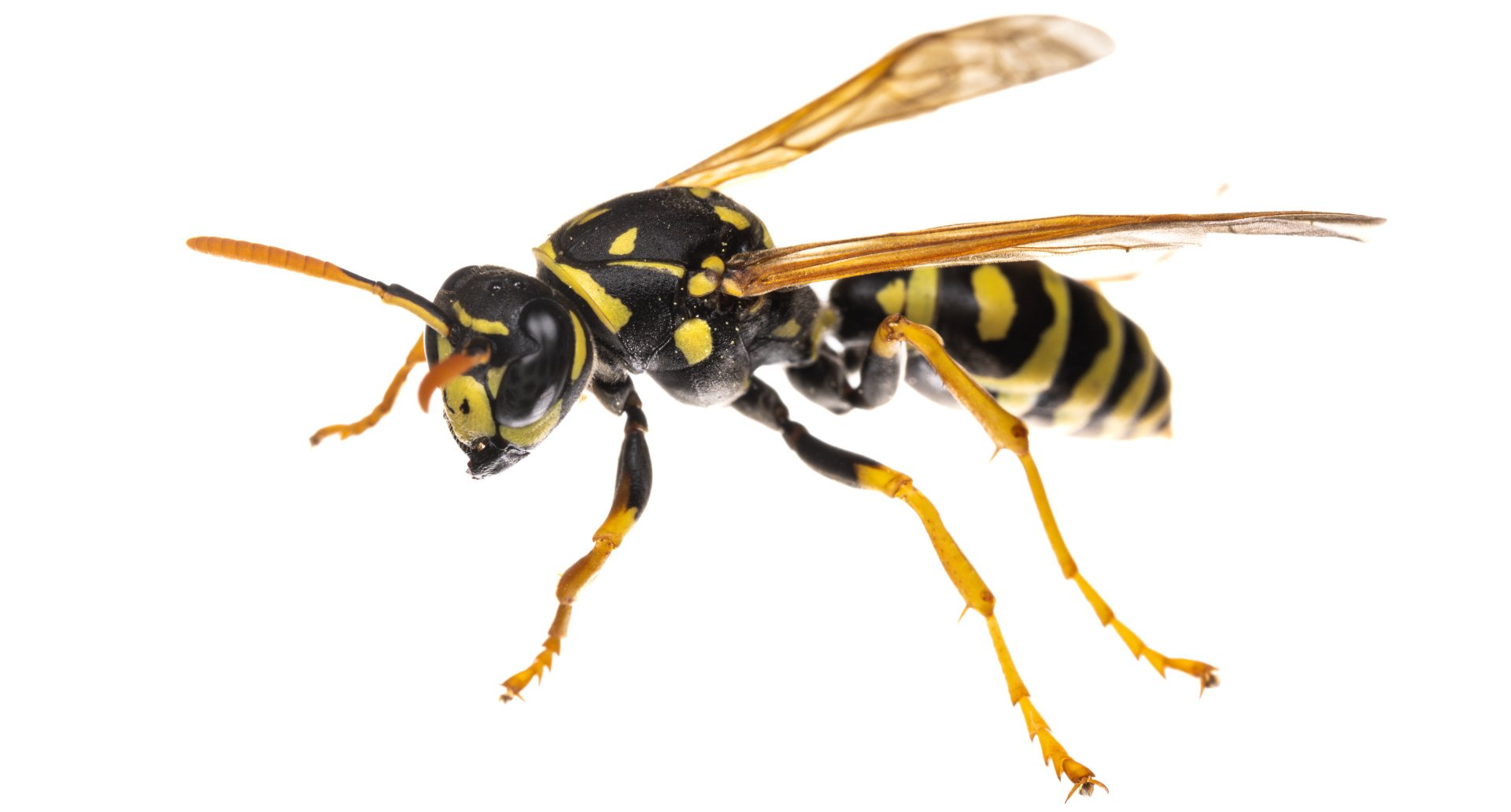
Paper wasps are easily recognized by their yellow and black stripes. They are a widespread species found in every region of the United States. They typically range in size from one-half inch to 1.5 inches long. Their distinctive nests are cells made from a cellulose-like material that resembles paper. These wasps play an important role in the ecosystem as they are predators that hunt other pests. Despite their ability to sting, paper wasps are generally not aggressive and tend to avoid human interaction. However, they can become defensive and may sting if their hive is directly disturbed. Caution is advised near their nests, but otherwise, paper wasps usually coexist peacefully with humans.
Yellow Jackets

Yellow jackets is a small wasp species found throughout the United States. They are notoriously aggressive and are easily identified by their black and bright yellow coloring. Unlike some other wasp species that tend to avoid human interaction, yellow jackets are known to attack when they perceive a threat. They are particularly defensive of their nests and can become quite aggressive if they feel endangered. A distinctive trait of yellow jackets is their ability to sting repeatedly, which can be particularly dangerous if an individual is caught in a swarm of yellow jackets.
Bald Faced Hornets

"Bald-faced hornet" is somewhat of a misnomer, as this insect is not a true hornet but rather a black-and-white variant of the yellow jacket wasp. As such, it shares yellow jackets’ aggressive traits. Found in most states across North America, the bald-faced hornet is known for its distinctive black and white coloring which sets it apart from the typical yellow and black pattern of other yellow jackets. Despite their smaller size compared to the Asian giant hornet, bald-faced hornets can be quite aggressive, especially when defending their nests. They typically grow to about half the size of an Asian giant hornet, but their aggressiveness makes them much more of a threat.
Mud Daubers

Mud daubers are a species of wasp found throughout the United States that are easily recognizable by their distinctive hourglass-shaped bodies and their unique nesting habits. They construct their nests from mud which are often found on the sides of buildings or in sheltered areas. These wasps are primarily known for their diet, which mainly consists of spiders. The blue mud dauber is a variant of the species that is recognized as a primary predator of the black widow spider. Unlike many other wasp species, mud daubers are relatively docile and rarely sting people which makes them less of a concern for human safety. Their presence is often considered advantageous due to their role in natural pest control.
Contact EcoGuard Pest Management if You Are Dealing with Stinging Insects
While stinging insects like yellow jackets, mud daubers, and bald-faced hornets play vital roles in our ecosystems, their presence can be unsettling and sometimes dangerous. If you're dealing with an infestation or concerned about stinging insects around your home or business, don't hesitate to contact EcoGuard Pest Management. Our team of experienced professionals is equipped with the knowledge and tools to safely and effectively manage these pests. We devise custom plans designed to exterminate your problem so you can feel safe in your home. Reach out to EcoGuard Pest Management today for reliable and eco-friendly solutions to your stinging insect concerns.
Murder Hornet FAQs
What happens if you get stung by a killer hornet?
If you get stung by an Asian giant hornet, you'll likely experience intense pain because their venom contains potent neurotoxins. The sting can cause severe swelling, redness, and, in some cases, blistering or tissue damage. While a single sting is rarely fatal to a healthy individual, multiple stings or a sting to someone allergic to hornet venom could be life-threatening and would require immediate medical attention.
Why are they called killer hornets?
They are called "killer hornets" primarily due to their aggressive hunting behavior and their potential to kill large numbers of bees. The Asian giant hornet is often referred to as the "killer hornet" or “murder hornet” because they can decimate entire honeybee hives in a short period. Additionally, their powerful venom and ability to deliver multiple stings make them a threat to humans. They are particularly dangerous in cases of multiple hornets attacking or for individuals with allergic reactions to their stings.
Are killer hornets poisonous?
 Button
ButtonAsian giant hornets are not poisonous, but they are venomous. This means they inject venom through their stings. Their venom contains a mix of toxic substances that can cause pain, swelling, and, in rare cases, more severe reactions like anaphylactic shock.
What is the difference between a wasp and a killer hornet?
 Button
ButtonThe main difference between a wasp and a killer hornet, lies in their size, appearance, and behavior. Killer hornets are generally larger and more dangerous than most wasp species. The Asian giant hornet, for instance, can reach lengths of up to two inches. Additionally, killer hornets often have a more potent venom and a more painful sting compared to wasps.




